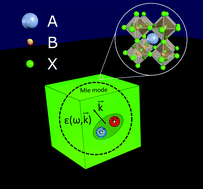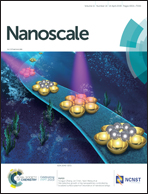Beyond quantum confinement: excitonic nonlocality in halide perovskite nanoparticles with Mie resonances †
Abstract
Halide perovskite nanoparticles have demonstrated pronounced quantum confinement properties for nanometer-scale sizes and strong Mie resonances for 102 nm sizes. Here we studied the intermediate sizes where the nonlocal response of the exciton affects the spectral properties of Mie modes. The mechanism of this effect is associated with the fact that excitons in nanoparticles have an additional kinetic energy that is proportional to k2, where k is the wavenumber. Therefore, they possess higher energy than in the case of static excitons. The obtained experimental and theoretical results for MAPbBr3 nanoparticles of various sizes (2–200 nm) show that for particle radii comparable with the Bohr radius of the exciton (a few nanometers in perovskites), the blue-shift of the photoluminescence, scattering, and absorption cross-section peaks related to quantum confinement should be dominating due to the weakness of Mie resonances for such small sizes. On the other hand, for larger sizes (more than 50–100 nm), the influence of Mie modes increases, and the blue shift remains despite the fact that the effect of quantum confinement becomes much weaker.

- This article is part of the themed collection: Halide Perovskite Nanocrystals


 Please wait while we load your content...
Please wait while we load your content...